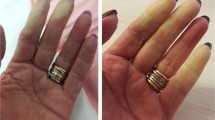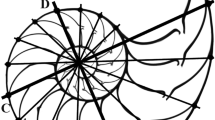Abstract
The rate of calcification within the human thoracic aorta from completion of body growth to advanced old age was examined. Fifty-eight aortae, obtained at necropsy, were dissected into four layers: the complete intima and the separated media, which was subdivided into three tissue samples of equal thickness, defined as the media-inner,-middle, and-outer layers. The sampling sites selected for analysis were from regions of the aortic surface that were free of atherosclerotic plaques. The calcium content within each tissue layer of the aorta was determined. Arterial wall thickness and the cholesterol content of the four layers were also measured. Intimal calcification increased progressively during aging: from 1.6 μg Ca/mg tissue at 20 years of age to 5.2 μg Ca/mg tissue by 90 years of age. When intima calcium concentration was expressed by tissue volume (w/v), no significant change during aging was found. Medical calcification, as w/v and by w/w, increased throughout aging. Calcium accumulation was most marked in the middle, elastin-rich layer of the media, increasing from 1.4 μg Ca/mg tissue at 20 years of age to 49.50 μg Ca/mg tissue by 90 years of age. Calcium levels also increased in the other media layers, but at a slower rate then that found within the middle media.
Similar content being viewed by others
References
Buck RC (1951) Minerals of normal and atherosclerotic aortas. Arch Pathol 51:319–328
Monckeberg JG (1903) Uber die heine mediaverkalkung der extremitatenarterien und ihr verhalten zur arteriosklerose. Virchows Arch [A] 171:141–167
Monckeberg JG (1914) Mediaverkalkung und Atherosklerose. Virchows Arch [A] 216:408–416
Everhart JE, Pettitt DJ, Knowler WC, Rose FA, Bennett PH (1988) Medial arterial calcification and its association with mortality and complications of diabetes. Diabetologia 31:16–23
Niskanen LK, Schonen M, Siitonen O, Lehtinen JM, Uusitupa MIT (1990) Aortic and lower limb artery calcification in diabetic patients and control subjects. Atherosclerosis 84:67–71
Molinari-Tosatti MP, Gotte L, Moret V (1971) Some features of the binding of calcium to elastin. Calcif Tissue Int 6:329–334
Wood SA, Prasad KU, Urry DW (1985) Cross-linked polypentapeptide of elastin as a calcifiable matrix: molecular weight dependence. Calcif Tissue Int 37:565–571
Smith EB, Staples EM (1980) Distribution of plasma proteins across the human aortic wall Atherosclerosis 37:579–590
Fry DL (1987) Mass transport, atherogenesis and risk. Artero-sclerosis 7:88–100
Penn MS, Chisolm GM (1991) Relation between lipopolysaccharide-induced endothelial cell injury and entry of macromolecules into the rat aorta in-vivo. Circ Res 68:1259–1269
Schiffmann E, Martin G (1962) In-vitro calcification of rat aorta in serum. Nature 194:189–190
Carlstrom D, Engfeldt B, Engstrom A, Ringertz N (1953) Studies on the chemical composition of normal and abnormal blood vessel walls. Lab Invest 2:325–335
Yu SY, Blumenthal HT (1963a) The calcification of elastic fibers: I. Biochemical studies. J Gerontol 18:119–126
Bigi A, Forest E, Incerti A, Ripamonti A, Roveri N (1980) Structural and chemical characterization of the inorganic deposits in calcified human aortic wall. Inorg Chim Acta 55:81–85
Ku DY (1933) Microincineration studies of human coronary arteries. Am J Pathol 9:23–46
Lansing AI, Blumenthal HT, Grey SH (1948) Aging and calcification of the human coronary artery. J Gerontol 3:87–97
Yu SY, Blumenthal HT (1963b) The calcification of elastic fibers: 2. Ultramicroscopic characteristics. J Gerontol 18:127–134
Gardner MB, Blankenhorn DH (1968) Aortic medial calcification: an ultrastructural study. Arch Pathol 85:397–403
Witteman JCM, Kok FJ, vanSaase JLCM, Valkenburg HA (1986) Aortic calcification as a predictor of cardiovascular mortality. Lancet ii:1120–1122
Reid IR, Evans MS, Ames R, Wattie DJ (1991) The influence of osteophytes and aortic calcification on spinal mineral density in postmenopausal women. J Clin Endocrinol Metab 72:1372–1374
McGrath LT, Elliott RJ (1991) Formation of a lipid gradient across the human aortic wall during ageing and the development of atherosclerosis. Atherosclerosis 87:211–220
McGrath LT, Elliott RJ (1990) Lipid analysis and fatty acid profiles of individual arterial atherosclerotic plaques. Anal Biochem 187:273–276
Cook TA, Yates PO (1972) A critical survey of techniques for arterial mensuration. J Pathol 108:119–127
Radin NS (1969) Preparation of lipid extracts. Methods Enzymol 14:245–254
Watson D (1960) A simple method for the determination of serum cholesterol. Clin Chim Acta 5:637–641
Sale FO, Marchesini S, Fishman PH, Berra B (1984) A sensitive enzymatic assay for the determination of cholesterol in lipid extracts. Anal Biochem 142:347–350
Bowers GN, Rains TC (1988) Measurement of total calcium in biological fluids: flame atomic absorption spectrometry. Methods Enzymol 158:302–319
Cali JP, Bowers GN, Young DS (1973) A refereed method for the determination of total calcium in serum. Clin Chem 19:1208–1213
Bland M (1989) An introduction to medical statistics. Oxford University Press, Oxford, p 216
Leatherbarrow RT (1990) Using linear and non-linear regression to fit biochemical data. Trends Biochem Sci 15:455–458
Blumenthal HT, Lansing AI, Wheeler PA (1944) Calcification of the media of the human aorta and its relation to intimal arteriosclerosis: aging and disease. Am J Pathol 20:665–679
Mitchell JRA, Adams JH (1977) Aortic size and aortic calcification: a necropsy study. Atherosclerosis 27:437–446
Klotz O (1905) Studies upon calcareous degeneration: 1. The process of pathological calcification. J Exp Med 7:633–675
Weinhouse S, Hirsch EF (1940) Chemistry of atherosclerosis: 1. Lipid and calcium content of the intima and of the media of the aorta with and without atherosclerosis. Arch Pathol 29:31–41
Lansing AI, Alex M, Rosenthal TB (1950a) Atheromatosis as a sequel to senescent in the arterial wall. J Gerontol 5:314–318
Lansing AI, Alex M, Rosenthal TB (1950b) Calcium and elastin in human arteriosclerosis. J Gerontol 5:112–119
Kanabrocki EL, Fels IG, Kaplan E (1960) Calcium, cholesterol and collagen levels in human aortas. J Gerontol 15:383–387
Yu SY (1971) Cross-linking of elastin in human atherosclerotic aortas: 1. A preliminary study. Lab Invest 25:121–125
Spina M, Garbin G (1976) Age-related chemical changes in human elastins from non-atherosclerotic areas of thoracic aorta. Atherosclerosis 24:267–279
Serafini-Fracassini A (1963) Electron microscope and X-ray crystal analysis of the calcified elastic tissue. J Atheroscl Res 3:178–188
Schiffmann E, Martin GR, Corcoran BA (1964) The role of the matrix in aortic calcification. Arch Biochem Biophys 107:284–291
Eisenstein R, Ayer JP, Papajiannis S, Hass GH, Ellis H (1964) Mineral binding by human arterial elastic tissue. Lab Invest 13:1198–1204
Dmitrovsky E, Broskey AL (1985) Calcium acidic phospholipid phosphate complexes in human atherosclerotic aortas. Calcif Tissue Inf 37:121–125
Urry DW, Long MM, Hendrix CF, Okamoto K (1976) Cross-linked polypentapeptide of tropoelastin: an insoluble, serum calcifiable matrix. Biochemistry 15:4089–4094
Mandy GR, Martin TJ (1982) The hypercalcemia of malignancy: pathogenesis and management. Metabolism 131:1247–1277
Martin TJ, Suva IJ (1988) Parathyroid hormone-related protein: a novel gene product. Baillieres Clin Endocrinol Metab 2:1003–1029
Fleckenstein-Grun G, Fleckenstein A (1991) Calcium: a neglected key factor in arteriosclerosis. The pathogenic role of arterial calcium overload and its prevention by calcium antagonists. Ann Med 23:589–599
Fleckenstein-Grun G, Frey M, Thimm F, Hofgartner W, Fleckenstein A (1992) Calcium overload: an important cellular mechanism in hypertension and arteriosclerosis. Drugs (suppl 44) 1:23–30
Campbell JA, Biggart JD, Elliott RJ (1991) Detection of calcium binding proteins in human aortic tissue. Biochem Soc Trans 19:53
Author information
Authors and Affiliations
Rights and permissions
About this article
Cite this article
Elliott, R.J., McGrath, L.T. Calcification of the human thoracic aorta during aging. Calcif Tissue Int 54, 268–273 (1994). https://doi.org/10.1007/BF00295949
Received:
Accepted:
Issue Date:
DOI: https://doi.org/10.1007/BF00295949




